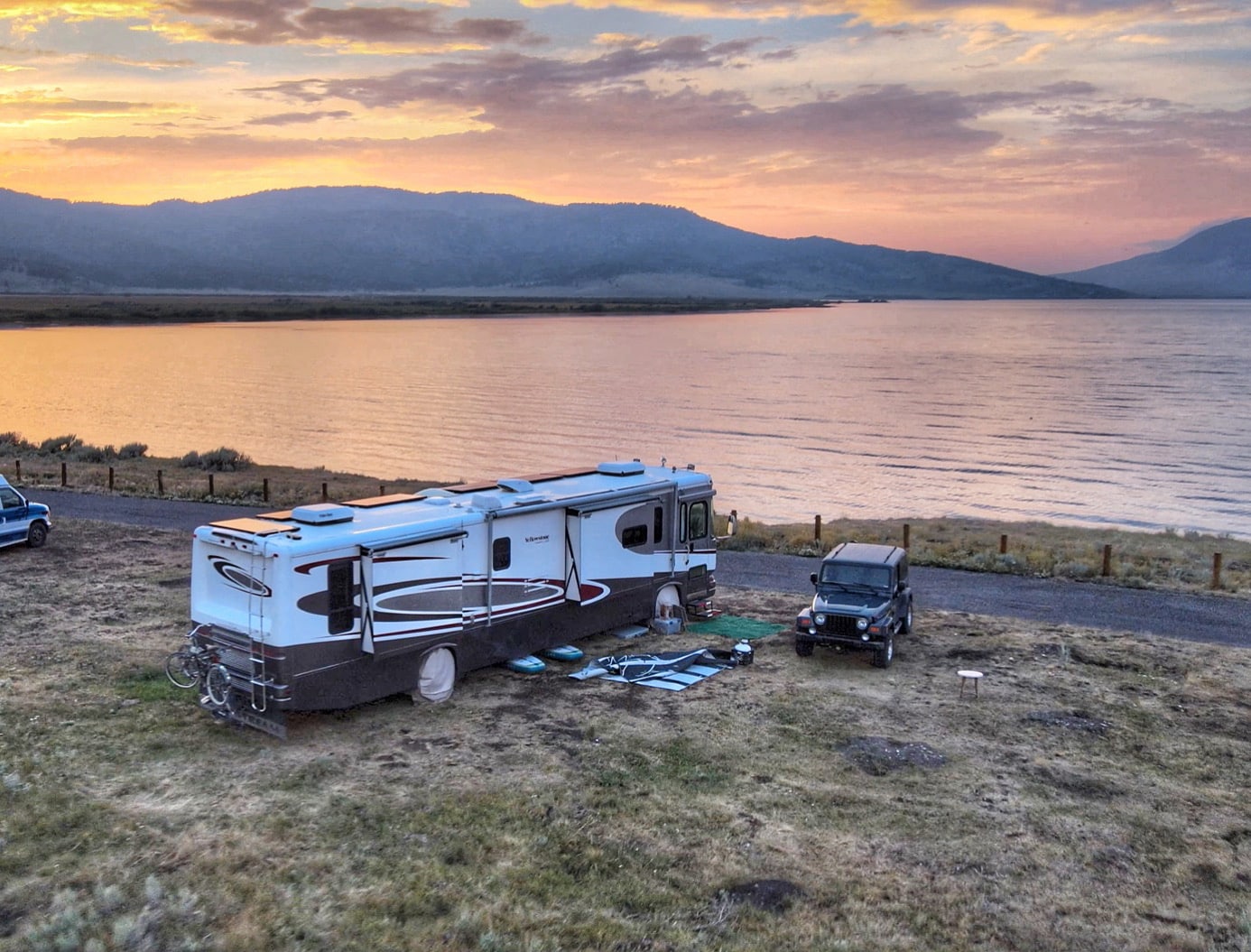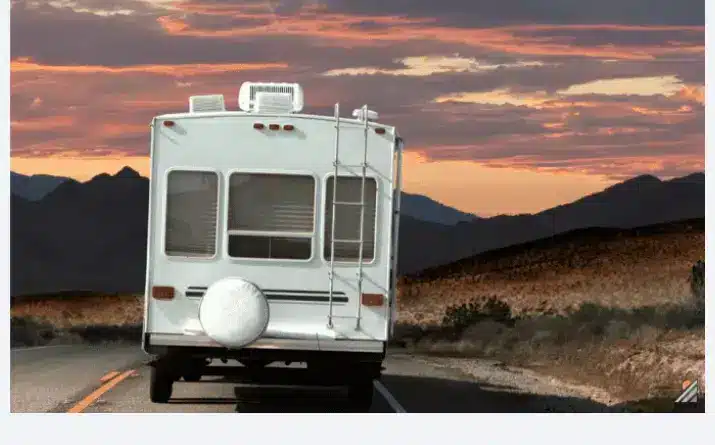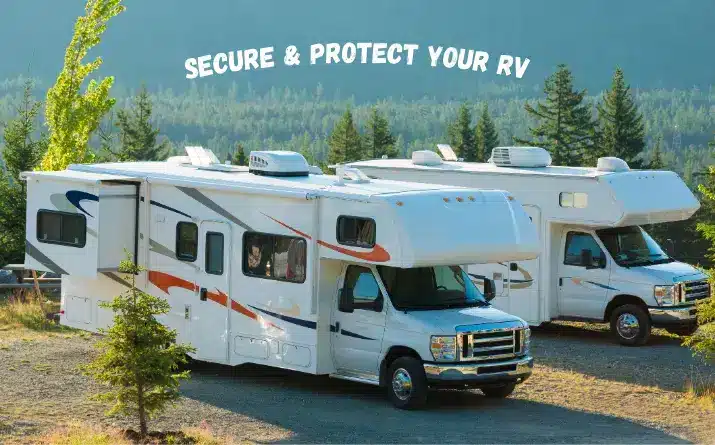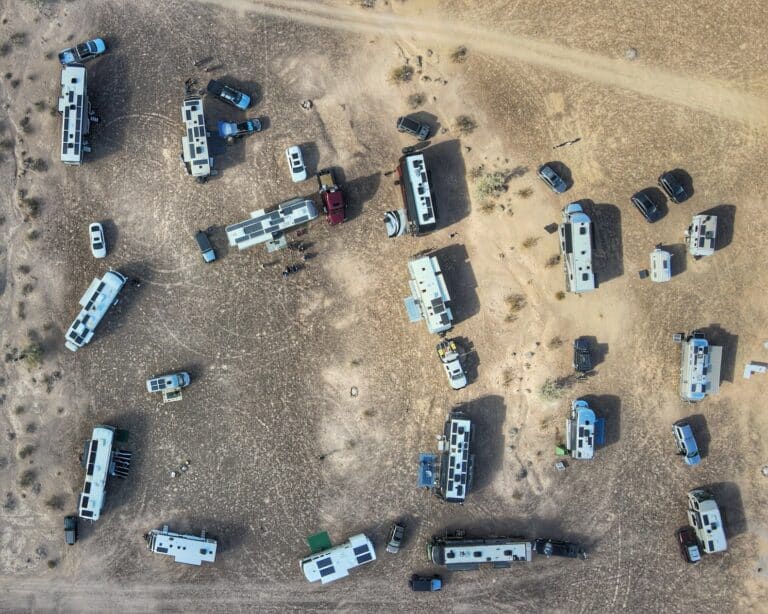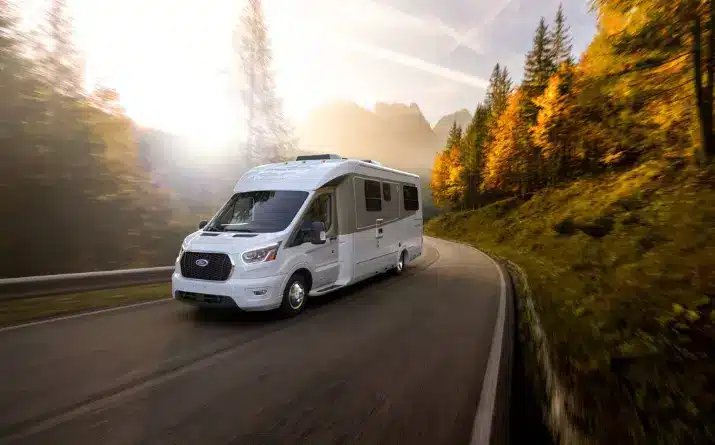Boondocking RVs: Choosing the Right One for You
Many people buy an RV with big dreams of camping under the stars, spending quiet time in nature, and pursuing outdoor adventures.
The modern-day RV park experience looks more like squeezing onto a small concrete pad, hearing your neighbor’s conversation through your window, and dumping your black tank while someone grills dinner five feet away.
So it’s no surprise that more and more people are exploring the added possibilities that a boondocking RV can bring to your RV adventures.
Features to Consider for Your Boondocking RV
If you can’t tell already, I’m not a huge fan of RV parks. I’ll admit, they have their place and some are super nice, but if you have dreams of camping in the great outdoors you’re not going to find that at an RV park.
And with RV parks everywhere filling up months, if not a year, in advance these days, now is a great time to consider boondocking.
Whether you’re searching for a new (or new-to-you) RV or wondering if the RV you have can support boondocking, there are a few critical things to consider. Basically, you’re cutting the cord.
If you’ve been staying at RV parks, this means going from full hookups to no hookups.
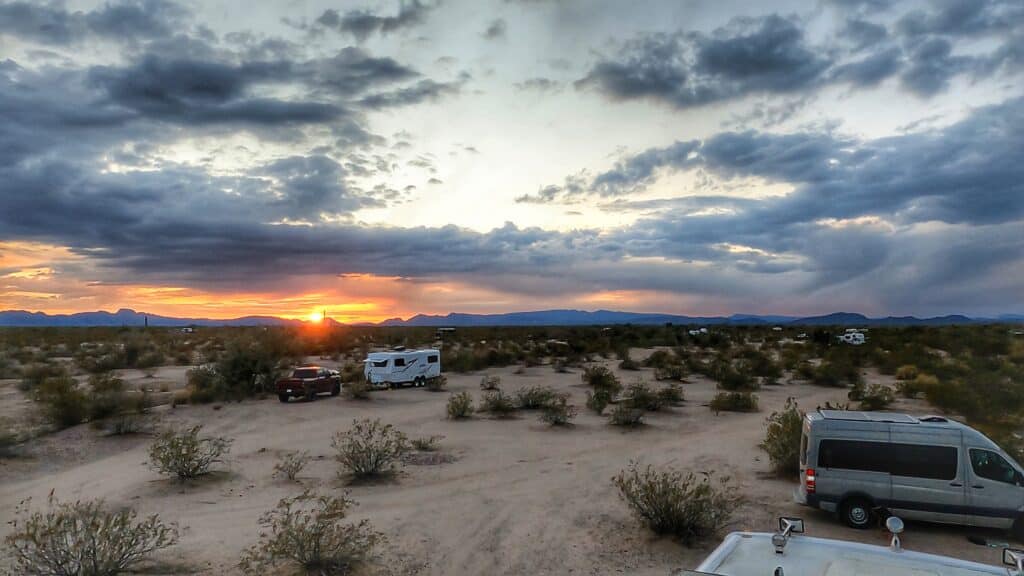
The Big 3: Water, Sewer, Power
Water Storage
How much water can you carry on board?
This is something that’s pretty difficult to change in most RV designs after the RV is built, so it’s best to buy with a clear intention on how much water you’d like to be able to carry.
A good rule of thumb is 3-4 gallons per person, per day (this includes your drinking water).
So multiply the number of people you’ll be camping with by the number of days you’d like to be off-grid for, and that’s the minimum size tank you should be searching for.
For example, if you’re a family of four and you’d like to be able to take week-long boondocking trips, that would be 4 x 7 = 28.
I’m lucky enough to have a big motorhome with a 100-gallon tank, and the two of us can live comfortably off-grid for two weeks (3.5 gallons per person).
If you’ll primarily take short trips and do not need showers, that can significantly reduce consumption.
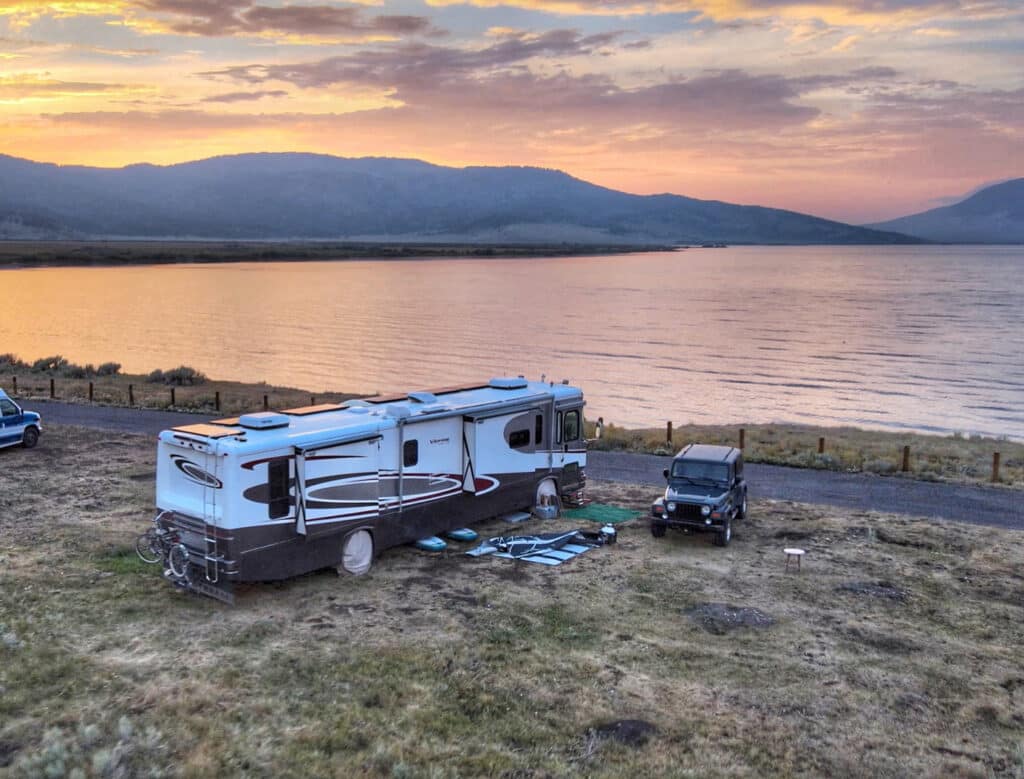
Secondary Water Sources
Luckily, if you have an RV with a small freshwater tank, you can still use an external vessel to carry more water or to go get water when you run out.
We have a soft-sided water bladder that packs down tiny, but there are plenty of options from the basic six-gallon jugs you can buy in the camping section at Walmart, to hauling a 50-gallon drum in the bed of your truck.
Trust me, once you start boondocking, you’ll see it all out there!
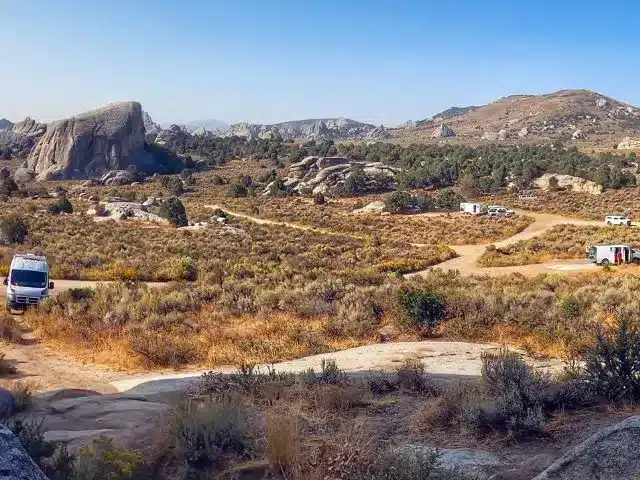
Sewer
How much holding tank space do you have?
Everything that goes down the sink, shower, or toilet has to go somewhere! The sink and shower generally go to the gray tank and the toilet to the black tank.
If you’re hooked up at an RV park, you can leave your tanks open all the time, and may not even realize how much holding tank space you need.
This tool is a system that is difficult to change after an RV is built, so it’s good to purchase an RV that has the holding tank sizes that you need.
Again, this likely will depend on the number of people you’ll be camping within your RV, and the length of time you’d like to be able to stay out in the “boondocks” without having to leave to dump your tanks.
Worst case scenario, if you already have an RV with small holding tanks, there is a portable holding tank option that could buy you an extra 40 or so gallons.
These are typically mobile and could be taken away and dumped, or just kept with you to carry some extra waste.
They’re pretty pricey ($300+), take up a lot of space, and aren’t really something you want to store inside your RV, so I think this option is a last resort.
If you can buy an RV with bigger holding tanks, it will make a much better boondocking RV.
A great way to save on tank space is to use a composting toilet. This way, you never have to dump your black tank again!
Since everything from the toilet gets taken out of the RV and nothing goes into the black tank, you can even plumb your black and gray tanks together so that you have the total combined volume of the two tanks for just your gray water.
Most RVs don’t come stock with a composting toilet, but they’re relatively easy to install. If you find an RV you love, that happens to have small tanks, a composting toilet may save your boondocking dreams.
Power
How will you turn on the lights?
If you can’t plug into the grid, how will you make and store power? There are a few options and it will be a matter of preference and budget on which direction you choose.
The easiest and cheapest option is a generator. Many RVs will come with a generator. Class A Motorhomes will likely have one built-in. Likewise, 5th Wheels (especially toy haulers) generally come with a generator.
But anyone can buy a generator at the hardware store and plunk it down outside the RV to light things up. This is a noisy, fuel-consuming solution, so RVers dreaming about quiet time in nature generally don’t prefer this option.
The next option is solar. Luckily it’s easy to add solar to just about any RV setup to transform your rig into a boondocking RV. Whether you have it mounted to the roof, or use a portable setup, solar can be connected to just about any RV.
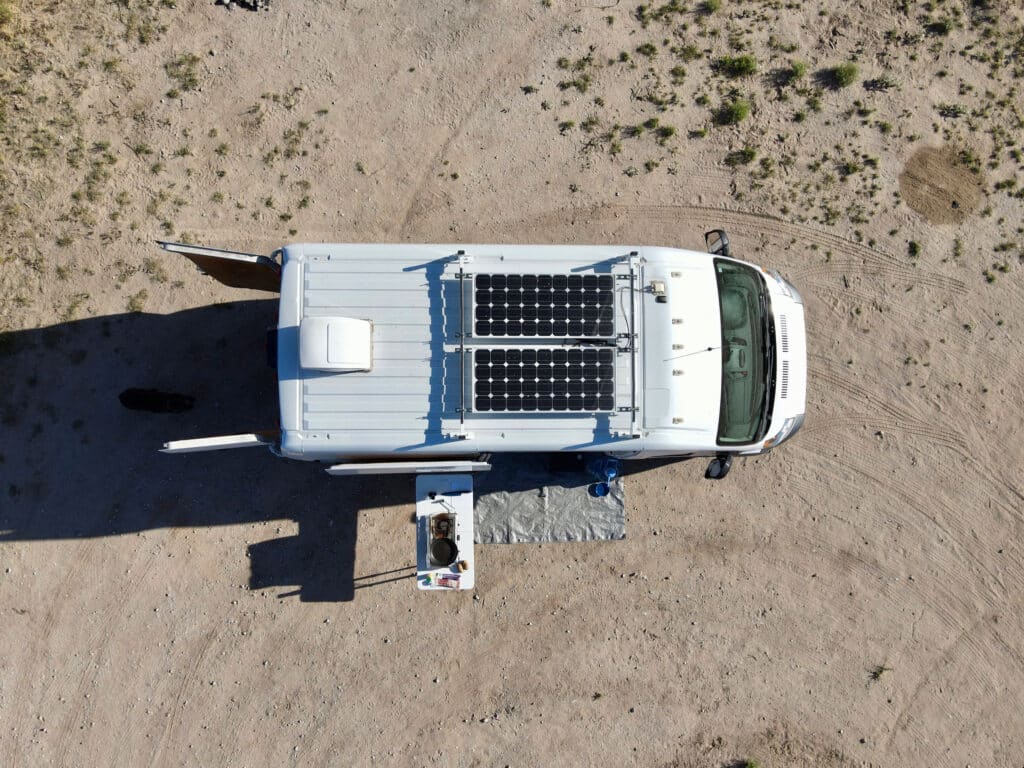
There are many price points to get into the solar game, and your needs will be determined by how you plan to use the RV. If you’re going away for weekends in the woods, maybe you don’t need much power.
Or if you’re planning to live and work full-time in your RV, you’ll probably need a full solar system to power a “normal” lifestyle.
But no amount of power generation matters if you don’t have a way to store it. So unless you run the generator 24/7, or only go camping in the Alaska summer where the sun shines 24/7, you’re going to need some batteries.
If you can afford them, lithium batteries are worth the sticker price, because they allow you to use 100% of the power you’ve stored. The older-style AGM or lead-acid batteries only allow you to discharge about 50%.
When shopping for your boondocking RV, you’ll want to see what type of batteries it comes with, and how much space there is to expand the battery bank.
It’s easy to upgrade the batteries themselves, but many standard RVs come with space for only two batteries, and finding storage space for additional batteries may prove to be a challenge.
What Else to Consider for Boondocking RVs
There are a couple other key things to consider as you prepare for off-grid RV experiences: propane and internet access.
Propane
What size propane tank does the RV have?
If the propane tank is integrated into the RV, it is a difficult thing to change out. So, especially if you’re looking at Class A Motorhomes, be sure to check the propane tank size.
On a trailer, you’ll probably get a five or seven-gallon propane tank (or two!) with your RV. If it comes with five-gallon tanks, it’s usually easy to swap them in the same space for seven-gallon tanks.
This is important because when boondocking you’re likely to use more propane than while hooked up at an RV park. Your refrigerator will run on propane all the time, your water heater will require propane to work, and you may do more cooking with propane as well.
Last but not least, your RV furnace will be running on propane if you’re camping somewhere cold. Most off-grid power systems cannot support the long-term running of electric heaters.
The furnace has the biggest propane consumption, but obviously only when you need to warm up the RV.
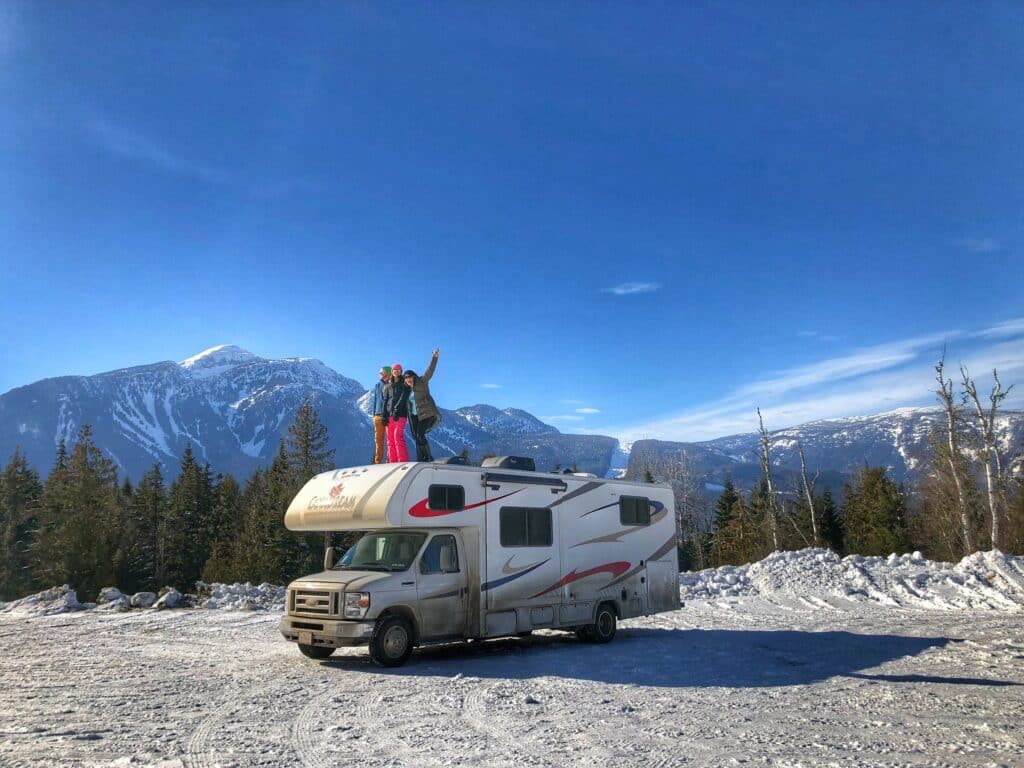
Internet
Do you need connectivity while boondocking?
Some newer RVs come equipped with a Winegard cellular antenna already wired and mounted to the roof. These are easy to add if your RV does not come with one. However, they are pricey at up to $500 or more before installation costs.
If connectivity is important to you, factor cost and access into your plans.
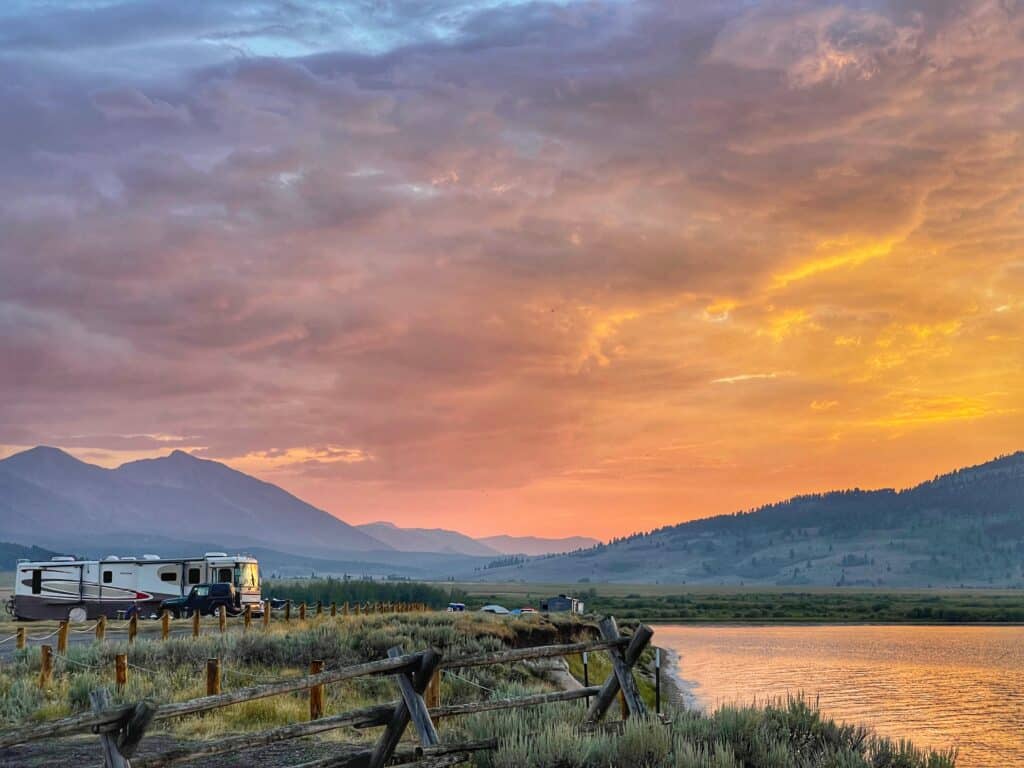
If your RV camping dreams include starry skies and nature out your front door, set yourself up for success and choose an RV that supports your boondocking needs.
Remember, the elements that are integrated are the hardest to change- freshwater tank, black and gray holding tanks, and an internal propane tank.
To get started with choosing the right RV for boondocking, consider a few key factors:
All of this information combined will help determine how much water you need, your tank size requirements, and which power system is best for you.
Remember, you can start small and work your way up to different systems and longer trips as you outfit your boondocking RV.
Get out there and give it a try. Start with a weekend off-grid and see what you think.
Happy Camping!
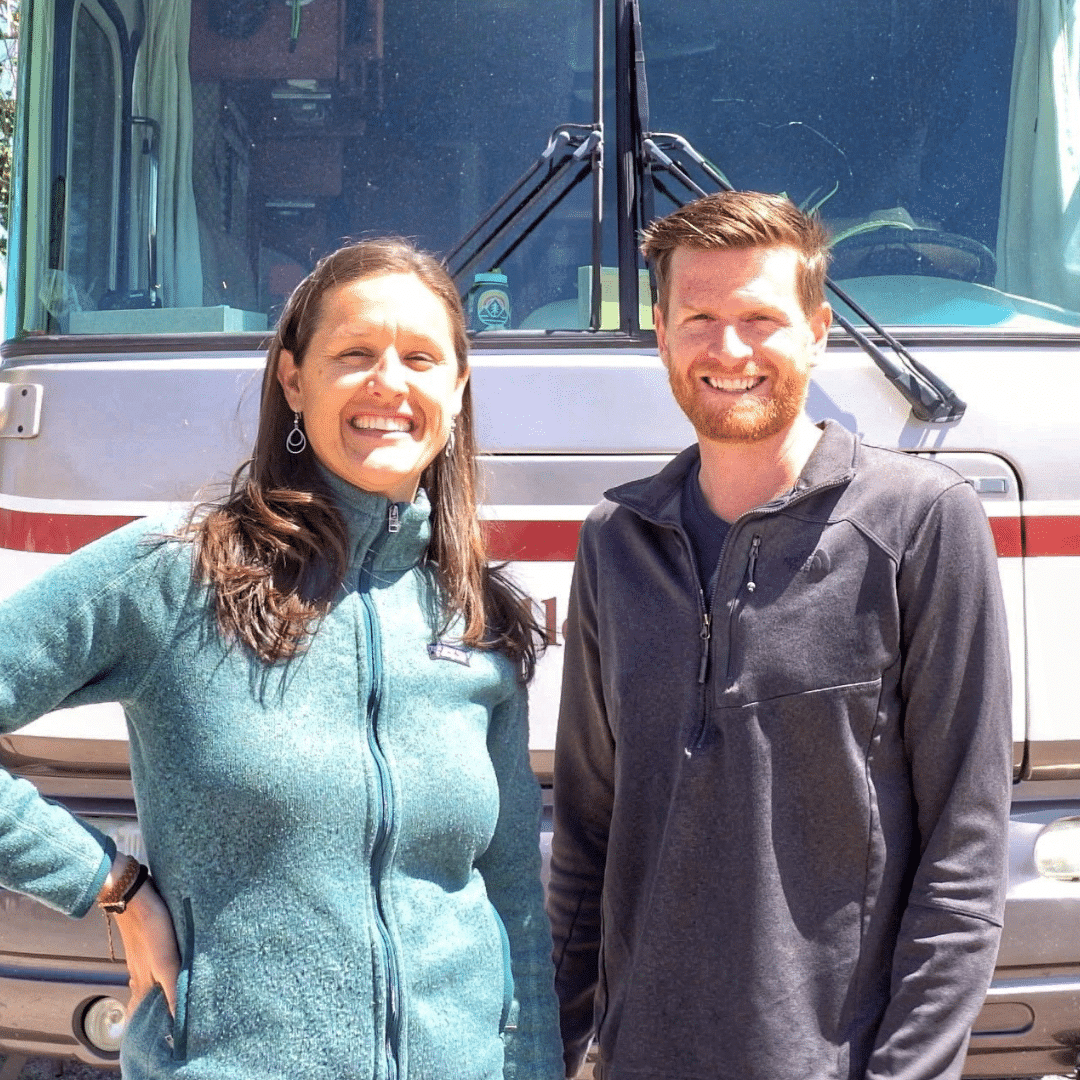
Kristen Bates lives & works from her RV, primarily boondocking off-grid. She owns and operates a women-led travel company, Legit Trips. Kristen loves to explore new places and inspire others to do the same. If she’s not typing away on her laptop, she’s off on an adventure- hiking, biking, or SUP boarding. You can follow her RV adventures @PerpetualMoves and learn more about her travel company at LegitTrips.com.


